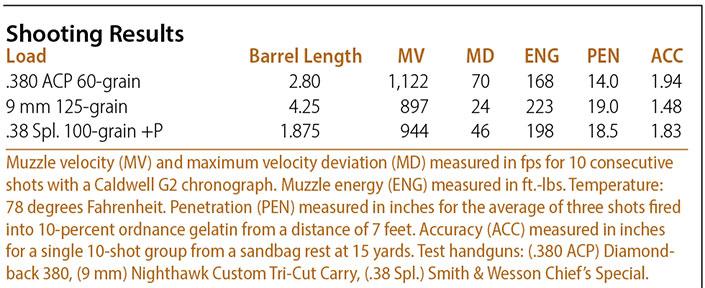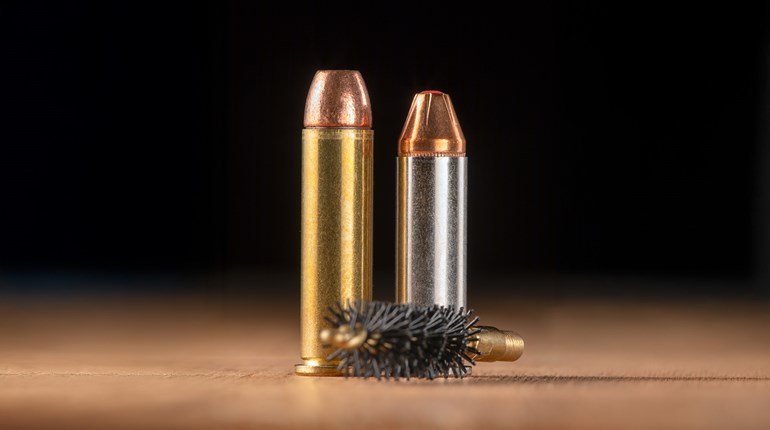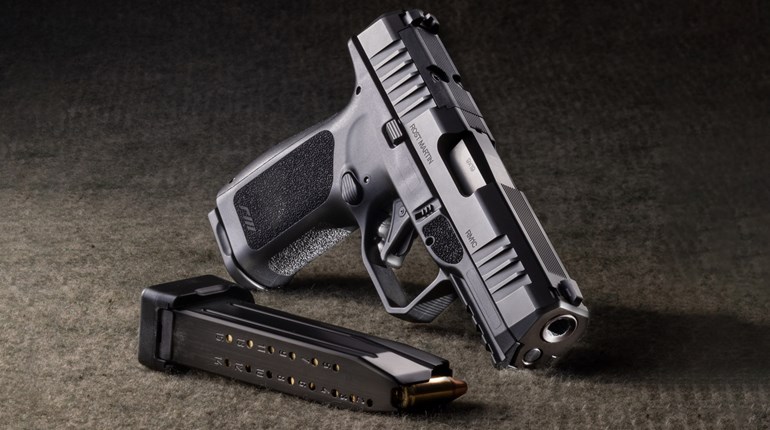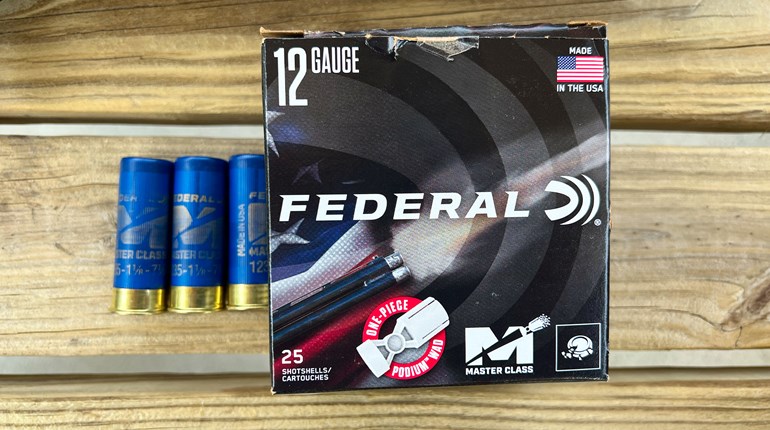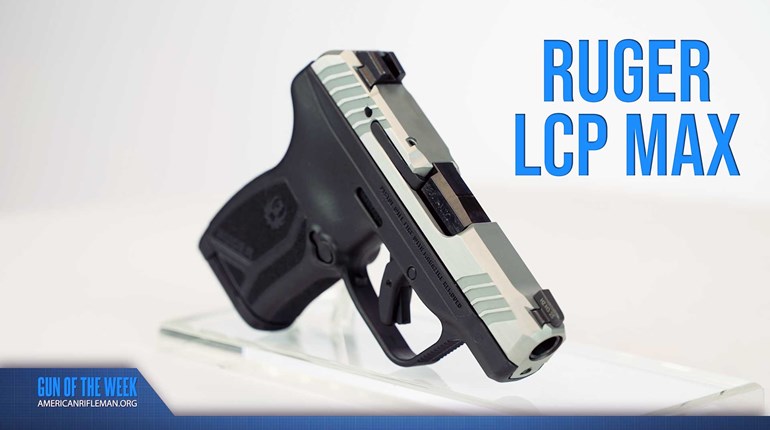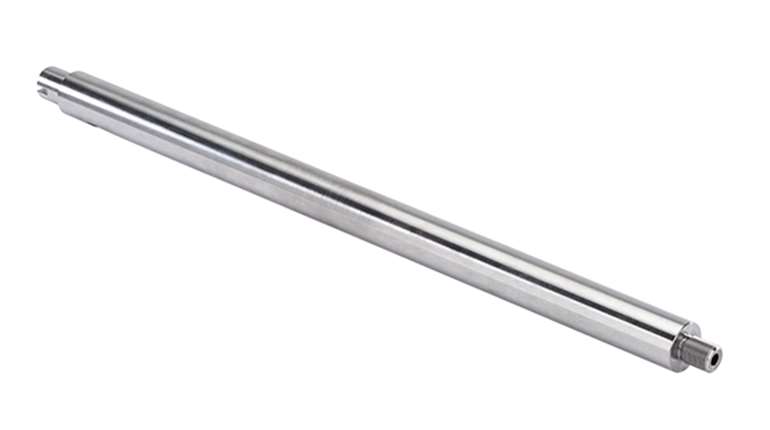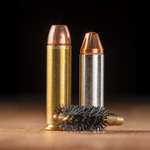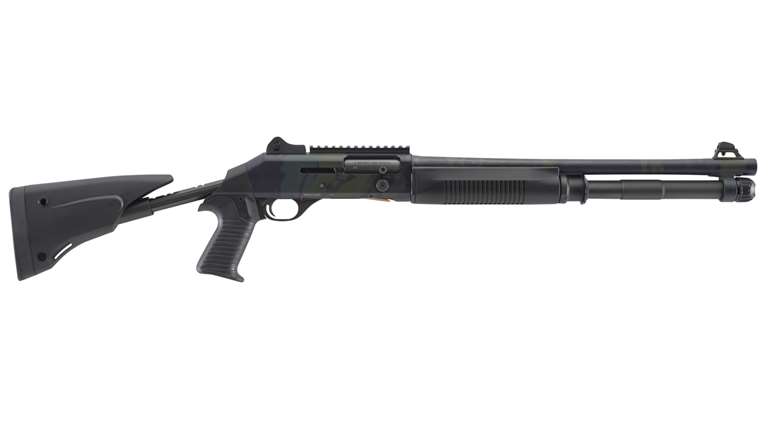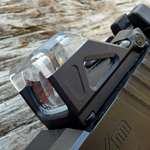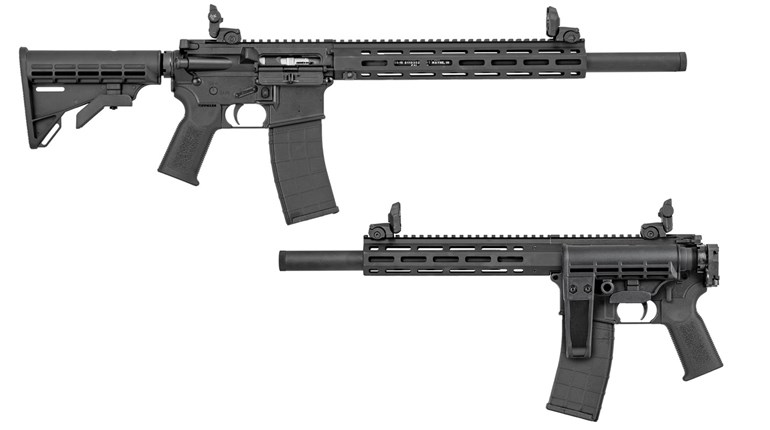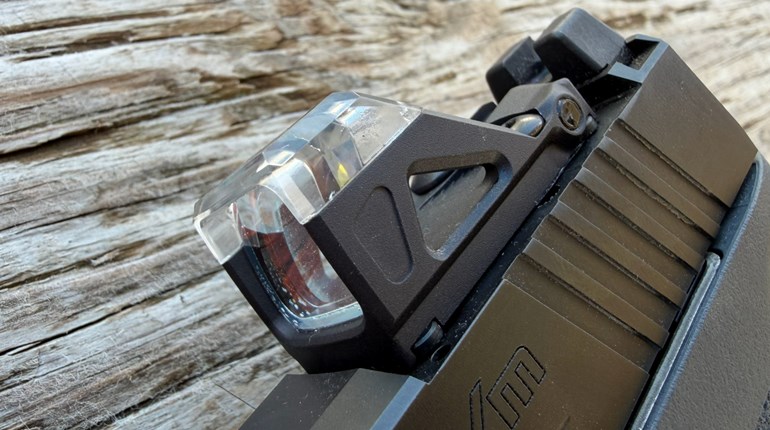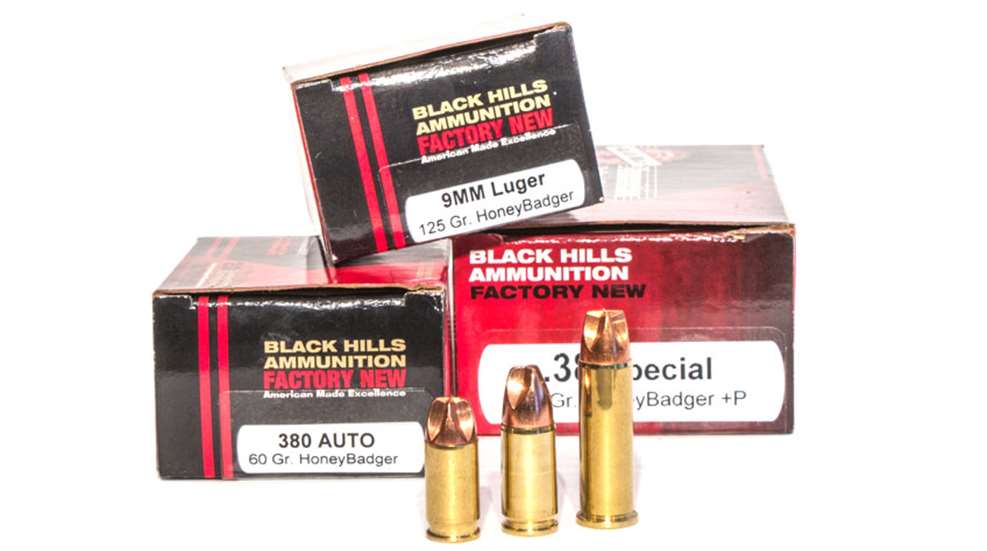
When you think about handgun ammunition as it relates to personal protection, we’ve come a long way since Bat Masterson was shooting it out with Sergeant King in 1876. We’ve evolved way beyond solid-lead projectiles that rarely expanded to copper and lead-alloy projectiles that can deform to more than twice their original diameter. Surprisingly, the bullet chosen for the new Black Hills HoneyBadger line of defensive-handgun ammunition does not expand at all.
You’re probably thinking this is foolish. But, before you pass judgment, let’s review some terminal-ballistic truths. Handgun bullets damage bodily tissue by poking holes. By building bullets that expand, bullet engineers can increase the size of that hole. However, an expanding bullet slows sooner because it has more resistance. In other words, the depth to which an expanding bullet penetrates is largely dependent on how much it expands. It’s easy to make a bullet penetrate deep, and it’s easy to make a bullet that will expand. The tricky part is finding balance, particularly balance that’s consistent.
Penetration is key because, to paraphrase the great gunwriter Finn Aagaard, in the absence of sufficient penetration, little else will matter. In other words, it’s not just about making a hole, it’s about making a hole deep enough to reach vital organs or bone structures in order to stop your attacker—every time. Penetration and expansion with some loads are erratic because they’re often fired from short barrels and intermediate barriers can hinder hollow-point performance. So what is it about the HoneyBadger that makes it perform differently than conventional self-defense ammo? According to Jeff Hoffman at Black Hills, “When you eliminate the reliance on hollow-point expansion of the projectile, which is a big variable, you get very consistent terminal performance even in conditions where hollow points often fail.”
Black Hills HoneyBadger ammunition is loaded with a bullet engineered by Lehigh Defense. Now, Lehigh Defense makes its own ammunition, but the company also partners with other manufactures looking for modernized projectiles. The work Lehigh Defense has done with various military and government agencies has given it not only a unique skill set, but broad insight into developing unconventional munitions. Extensive experimentation with non-expanding copper and brass bullets has shown the company can create a proprietary-bullet profile capable of delivering a wounding pattern similar to what is expected from expanding bullets, but without sacrificing vital penetration.
The bullets loaded in Black Hills HoneyBadger ammo are solid copper with a profile that resembles a flat-nose FMJ bullet, but the similarities end there. These bullets have either three or four deep scallops around their circumference. These cuts extend to the bullet nose, where they come to together creating either a three- or four-pointed, sharp-edged star. When impacting material mostly made up of water—such as the human body—these scallops rotate to force tissues outward as the bullet penetrates. This dynamic fluid dislocation works to increase the radius of the hole the bullet creates. The bullet works in a similar fashion to the PolyCase ARX design.
That’s the $5 explanation of how these bullets work. In hillbilly terms you might just say that, instead of poking a hole, these bullets make one.
Since most humans are smart enough to not volunteer for terminal-ballistics-research projects, ballisticians are relegated to using various test media to investigate the performance of projectiles. Ten-percent ordnance gelatin is the industry standard, and I wanted to see if Black Hills had chosen the right name for its new line.
The ordnance gelatin results can be seen in the accompanying table and all loads exceeded the FBI’s minimum penetration depth of 12 inches. Admittedly, I was surprised at the damage done inside the gel blocks. In every case internal gel-block damage mirrored that of conventional hollow-point bullets—of the same velocities—for all three cartridges. It’s also important to note these results were obtained with compact handguns. And incidentally, all three loads tested functioned perfectly in the test firearms.
Now, the reality is that we can only use ordnance gelatin tests to speculate as to how a bullet will perform in the real world. However, there’s enough data to allow that prediction to be reasonable. Based on these test results, I’d not hesitate to carry HoneyBadger ammunition. Insufficient penetration should not be an issue. And, though I did not test these loads against intermediate barriers, they should all do just fine. After all, there’s no hollow-point cavity to clog up, or bonding between a copper jacket and lead-alloy core to fail.
Hoffman, the man at the wheel at Black Hills, is a police sniper. He and his company also work hand in hand with law enforcement agencies, and a few have already purchased Black Hills HoneyBadger ammunition for duty use. (It is also available in .44 Mag. and .45 ACP.) I’m sure Hoffman would not stake his reputation or the lives of his fellow officers on a bullet he doubted.
I asked Hoffman why he chose the HoneyBadger name for this line of Black Hills ammo. I expected a response noting something about how it was a cool-sounding name good for marketing. That’s not what I got. Hoffman said he chose that name, “Because this bullet, like the small but ferocious honey badger, does not care about things that cause others to fail.”
